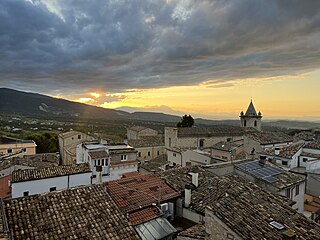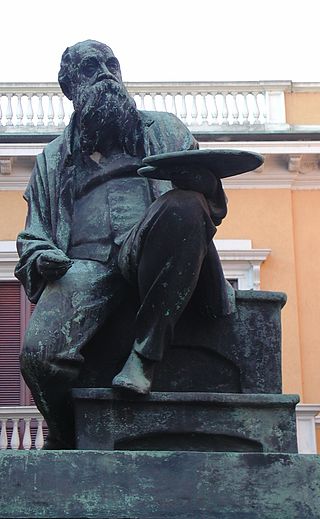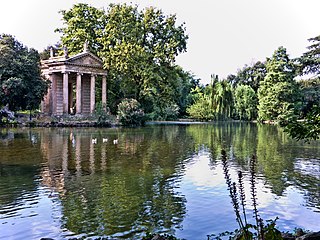
The properties of the Holy See are regulated by the 1929 Lateran Treaty signed with the Kingdom of Italy. Although part of Italian territory, some of them enjoy extraterritoriality similar to those of foreign embassies.

Monti is the 1st rione of Rome, Italy, identified by the initials R. I, located in Municipio I. The name literally means 'mountains' in Italian and comes from the fact that the Esquiline, the Viminal Hills, and parts of the Quirinal and the Caelian Hills belonged to this rione: currently, however, the Esquiline Hill belongs to the rione Esquilino.

Campitelli is the 10th rione of Rome, Italy, identified by the initials R. X, and is located in the Municipio I.

Castro Pretorio is the 18th rione of Rome, Italy, identified by the initials R. XVIII, and it is located within the Municipio I. The rione takes its name by the ruins of the Castrum Praetorium, the barracks of the Praetorian Guard, included in the Aurelian Walls.

Guardiagrele is a town and comune in the province of Chieti, part of the Abruzzo region of central Italy. It is in the foothills of the Maiella mountain at an elevation of around 576 metres (1,890 ft). Its population numbers about 10,000.

Antonio d'Enrico, called Tanzio da Varallo, or simply il Tanzio was an Italian painter of the late-Mannerist or early Baroque period.

Cavour is a station on Line B of the Rome Metro, opened on 10 February 1955. It is located on via Cavour, in the Monti rione of Rome, midway between Santa Maria Maggiore and via dei Fori Imperiali.

Having been ruled by several countries over the centuries, Milanese culture is eclectic and borrows elements from many other countries, including Austria, Spain and France. Similarities between these places and Milan can be noticed through the language, architecture, cuisine and general culture of these countries.

The Italian city of Milan is one of the international tourism destinations, appearing among the forty most visited cities in the world, ranking second in Italy after Rome, fifth in Europe and sixteenth in the world. One source has 56% of international visitors to Milan are from Europe, 44% of the city's tourists are Italian, and 56% are from abroad. The most important European Union markets are the United Kingdom (16%), Germany (9%) and France (6%). Most of the visitors who come from the United States to the city go on business matters, while Chinese and Japanese tourists mainly take up the leisure segment.

Villas and palaces in Milan are used to indicate public and private buildings in Milan of particular artistic and architectural value. Milan has always been an important centre with regard to the construction of historical villas and palaces, ranging from the Romanesque to the neo-Gothic, from Baroque to Rococo.

Mosè Bianchi (1840–1904) was an Italian painter and printmaker.

The Zone 1 of Milan, since 2016 officially Municipality 1 of Milan, is one of the 9 administrative divisions of Milan, Italy.
The following is a timeline of the history of the city of Milan, Italy.

The Palazzo della Compagnia dell'Arte dei Brentatori is a medieval palace located on Via de' Pignattari #11, starting at the Piazza Maggiore and running alongside the basilica church of San Petronio. It presently functions as the Hotel Commercianti, and a hotel at the site has existed for over a century.

The following outline is provided as an overview of and topical guide to Milan:

Pinciano is the 3rd quartiere of Rome (Italy), identified by the initials Q. III. The name derives from the Pincian Hill. It belongs to the Municipio II.
This page is based on this
Wikipedia article Text is available under the
CC BY-SA 4.0 license; additional terms may apply.
Images, videos and audio are available under their respective licenses.














